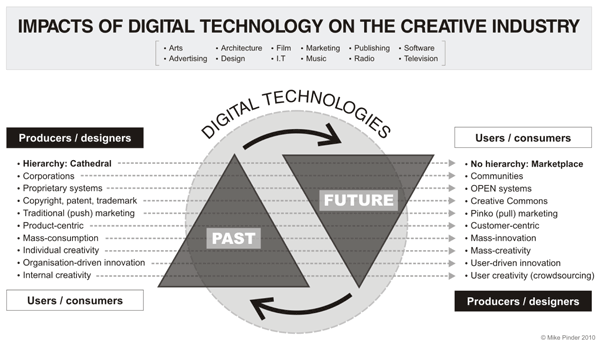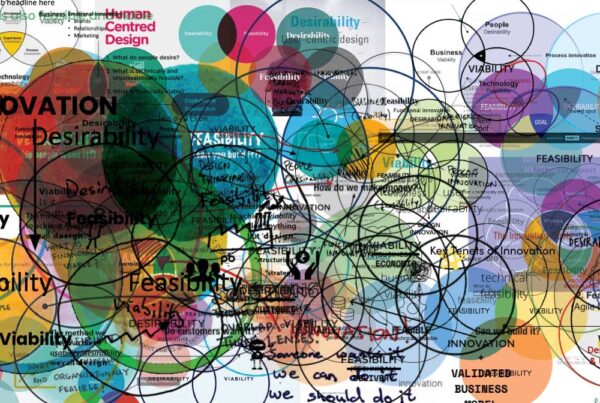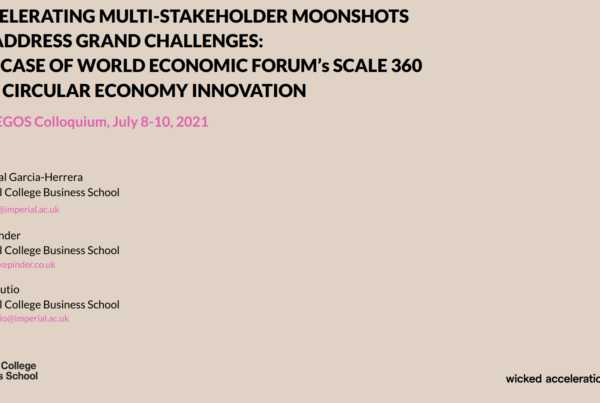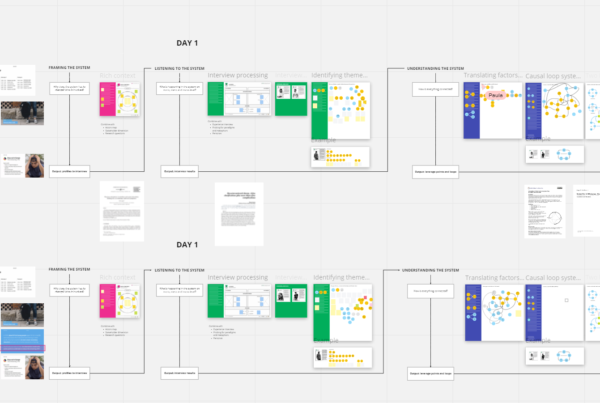ABSTRACT
Digital technologies are have significant effects on creative organisations especially as the relationship between end-user and producer is in a state of change. This paper maps out significant key issues and impacts on the creative industries, followed by primary research to test out the major themes and effects from a spectrum of industry sources and viewpoints. Literature revealed that dramatic changes in strategic management may be required as a result of emerging digital technologies. Primary research was undertaken in the form of twelve qualitative interviews (with design management consultants, graphic designers, art directors, technology strategists, product development managers, patent and IP lawyers), the results of which generally contrasted with the literature, revealing conflicting opinion around the significance and overall impacts of digital technologies. Findings suggest actors in the creative industries are aware of basic impacts, are confident of trained abilities to provide better creative output, but are equally fearful of present and future paradigm shifts already taking place.
1. INTRODUCTION
The global explosion of digital technologies has brought with it implications on innovation, creativity, and business models for the creative industries. Creative businesses and organisations will need to explore ways in which to take advantage of innovation from new areas within an open-network with constantly changing and evolving digital technology and business environments. This may have implications on existing hierarchy-based business models as technologically informed groups of people explore new ways to create value. There is a new generation of distributed, interconnected and mass-communicating end-users who impact upon traditional value creation processes and can provide new resources within the industries.
The aim of this paper is to understanding the effects of the global expansion of digital technologies and the implications on innovation, creativity and business models within the creative industries; and to analyse the impacts of the democratisation of digital technologies and tools as value-creation enablers for the creative industries.
2. LITERATURE
Digital tools are being democratised and becoming widely available to everyone for free. The 20th century represented a period of mass-consumption and there is now the possibility that the 21st century will represent mass-innovation via digital tools. There is a shift from a Cathedral with priest, to a marketplace, with everyone participating and traditional creative organisational hierarchies being dissolved.
One of the main areas identified in this field by Sapsed et al, 2008 is, „understanding how innovation changes business models and markets,‟ whilst looking at the effects of new technologies and new business models on sectors of the creative industries. Sapsed et al, 2008, argue that digital technology poses new opportunities for innovation for organisations, but also that they challenge existing business models as users develop innovation for themselves.
2.1 Literature summary
Conducting the literature review identified some of the most significant issues, changes and challenges facing creative organisations as well as revealing a number of underlying, linking themes. Fundamental impacts of digital technologies include: facilitating mass-collaboration; open creativity and innovation, the transition from push to pull marketing; consumers performing professional creative tasks and; new design resources and processes being explored and created. These themes form the focus of the primary research in order to further investigate, analyse and synthesise them against the literature from the perspectives of those within the creative industry. Some potential industry responses to such impacts could include: abilities to adapt current strategies and business models; increasing the open- organisational mindset, resistance and reluctance to new changes, unawareness of potential future effects and future government level engagement in research.
The underlying themes isolated indicated potential for immanent and rapid traditional paradigm inversions, brought about by the fundamental user-empowering characteristics of digital technologies that can flip traditional thinking and practice around on its head. This phenomenon underpins most situations analysed where cases of significant change are brought about by sudden shifts from one situation to the opposite; and occurring in relatively short periods of time.
2.2 Proposed model
A conceptual model to explain the phenomena is proposed in Figure 1.
Figure 1. Model highlighting the underlying impacts of digital technologies on the creative industries and the changing relationship between producers/designers and users/consumers.
3. PRIMARY RESEARCH
3.1.1 Methodology
Empirical research was based in grounded theory as data collection commenced without any previously established theoretical framework (due to the complex and overlapping nature of the issues. The research sought the opinions of expert participants; through their experience and observations. An interpretivist stance was used as it helps to uncover deep, hidden attitudes and beliefs around the key themes.
3.1.2 Data collection and analysis
Interviews targeted professionals from different disciplines within the creative industries and general themes for interviewing were used to ensure that the same areas are explored throughout (to allow for triangulation).
4. CONCLUSION
The literature narrowed-down to some of the most influential and impacting key issues affecting the creative industries. This demonstrated that there is a need for open-organisational thinking and an awareness of the dramatic opposing shifts to traditional business thinking, willingness to experiment with business models at all industry levels, embracing of mass-innovation, creativity and resources as well as calls for further research in the area.
The review took in a broad range of actors‟ viewpoints at varying levels of organisation within the creative industries and provided a relatively different picture to the literature. Creative organisations generally felt that digital technologies were extending, not shifting traditional ways of creating value; although there was clear acknowledgement of a general shift to user-generated content and thinking. The idea of design training, skills and education provided the main defence against the „mass audience taking the stage,‟ claiming that the audience simply lacks the knowledge to be a serious threat and that it merely provides and extension to trained designers‟ tools and was subsequently not taken too seriously as capable of replacing current job roles, functions and creativity.
This seemingly confident outlook rather out-shadowed underlying fears that were clearly evident. There were deeply-held views, demonstrating resistance to embracing, adopting, experimenting and taking advantage of digital technology as it was seen to be a perfect way in which to lose control of the audience, who would then start dictating, (via untrained voices) back up through established and traditional creative design processes. Openness was held with instinctive fear as it simply goes against traditional business thinking, but was something that creative organisations could see as the inevitable future; that they would reluctantly be drawn into at some point soon. The initial steps and competitive- lead advantage are happily surrendered to the to the largest organisations to experiment and test-out the best ways in which to exploit digital technologies (as well as absorb the initial financial investments and risk) for the future benefit of remaining organisations further down the line.
This interpretation looked at a number of existing implications of digital technologies and extended them to a largely unexplored and specific context within the creative industries. Opposing viewpoints have been highlighted between the literature and the primary research and looked at possible causes for these disparities. The literature review took in a wider-span than primary research which is based upon individual industry perspectives of occurring phenomena. Possible causes of these opposing viewpoints could indicate that the creative industries are not yet experiencing the observed effects of digital technologies or are not fully aware of the extent of these implications. It may also be the case that the literature is over-emphasising the significance of the perceived current and future impacts; but due to the variety and number of well-informed sources indicating the contrary, it seems logical to draw a conclusion that the creative industries are perhaps in a state conscious dismissal of impacts, by discrediting the significance or by simply burying heads on awareness and engagement in these current and future issues. Possible reasons accounting for dissonance between the literature and primary research could include mean the industries are relatively knowledge-unaware and future foresight is lacking due to the “newness‟ of the issues.
The industries are aware, but do not see the impacts as important yet and are waiting for lead organisations to test things out first.
Impacts have not yet been felt or experienced at more general industry levels, suggesting an ideal situation in which to start experimenting before changes are wider-influencing.
4.1 Further research implications
If creative organisations are in a state of unawareness or appreciation of potential future challenges, then how do the industries become more aware, whilst combining new technologies with new business models? And how do we proliferate this knowledge to dispel fears?
5. REFERENCES
[1] Andrews, A., & Bevelo, M. (2004). Understanding Digital Futures. Design Management Review , 50-57.
[2] Birkinshaw, J., Bessant, J., & Delbridge, R. (2007). Finding, Forming, and Performing: Creating Networks for Discontinuous Innovation. California Management Review , 49 (3), 67-84.
[3] Chesbrough, H. (2006). Open Innovation: The New Imperative for Creating and Profiting from Technology. Academy of Management , 87-88.
[4] Sapsed, D. J., Mateos-Garcia, J., Adams, D. R., & Neely, A. (2008). ESRC Business Engagement Project: A scoping study of contemporary future challenges in the UK creative industries. AIM Research.
[5] Reform, B. D. (2008). Creative Britain – New Talents for the New Economy. London: Crown Copyright.
Mike Pinder
EUROMED Management Toulon
Campus de la Grande Tourrache
Toulon, France
Digital Futures’10, October 11 – 12, 2010, Nottingham, UK.
(Adapted from Author’s Masters Thesis)







